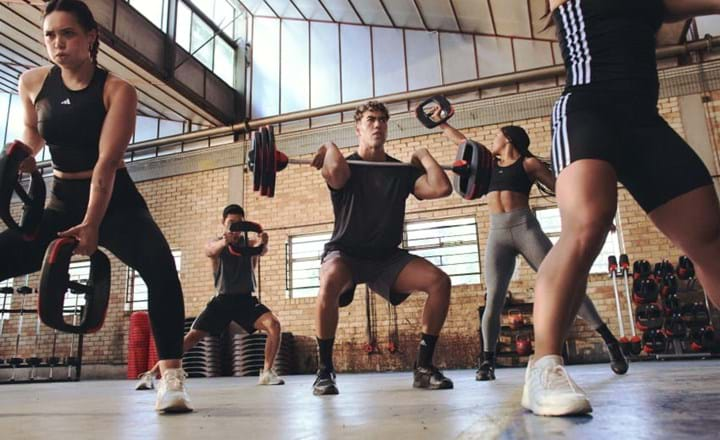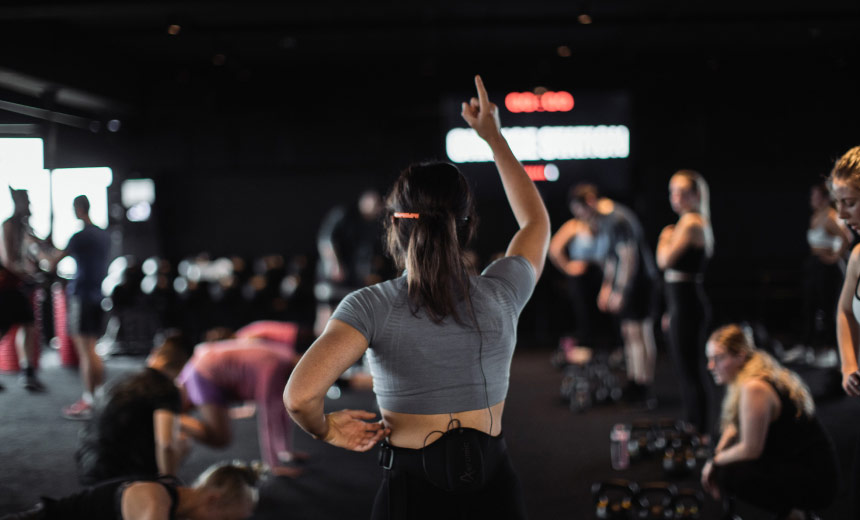
As someone with a helicopter view of the global club market, how would you assess its current health?
Dr Paul Bedford (PB): Generally, it's pretty good. There are issues within some businesses, but that's more to do with business models and practices rather than the industry as a whole. We've certainly seen people returning to clubs after the pandemic, but they're using clubs differently and in some cases using different clubs. The shift in behavioral patterns of members is most evident in city centers and suburbs, with club use reflecting the fact that people are spending less time in the office and more time working from home. With Tuesday to Thursday being the new office week, people are either investing more in suburban clubs (often with their families) or taking a Pay As You Go approach to urban clubs and being willing to pay a premium for the infrequency – like many of us are doing with travel, paying ad hoc fares instead of buying season tickets.
Obviously, there's been a big trend towards strength training and growth in the number of people working out online. Generally speaking, fitness providers now have a share of a customer, rather than owning their entire fitness experience. These people are going to multiple facilities, sometimes doing their own thing at home, then supplementing that with one-off boutique visits. This opens up opportunities for aggregators – and we’re also seeing that in the corporate fitness market due to shifting working patterns.

How does this impact the tenure of the average club member?
PB: It really varies by club. We worked with an operator recently and a third of their clubs had seen average membership tenure stay flat, a third had increased by a month or two, while a third had dropped by 7 to 10 months. On average, club membership lengths are trending shorter, so more clubs are embracing the importance of delivering a great experience to mitigate this – but it’s a long-term commitment if you want to realize the results. There are factors beyond our control hurting clubs right now – like the cost of living crisis – but I think the industry will be back above pre-pandemic levels in the next few years.
What can clubs do to counter these challenging operating conditions?
PB: It’s very important to have a distinct member offering and be clear what you stand for – if you try to stand for everything, you end up standing for nothing. So to take the specific example of a CrossFit or Hyrox offering, you’re appealing to strongly committed exercisers and it’s then a case of whether they choose you or go with the comparable competition.
But if you go to the other end of the spectrum and look at the people who are new to exercise, that’s where the industry is really missing a trick. We've significantly improved the quality of almost everything over the last 20 years and have some beautiful facilities to showcase, but we’re seriously lacking when it comes to onboarding. The analogy I often use is that it’s like walking into a car showroom and giving the keys to a Bentley to someone who hasn't got a driving license. Can they even get it out of the showroom? And if we're going to continue to grow the industry, we need to start segmenting and putting the right support in place so that new joiners are being set up for success.
Why do you think clubs struggle with onboarding?
PB: It’s definitely a long-term problem. I wrote my PhD on it many years ago and it’s still a major weakness for operators. The rise of the low-cost market and self-service has had an impact, leading to less emphasis on personal touchpoints. But there’s always been a challenge around properly measuring the value of onboarding, so many are disinclined to invest the time into it.
When you speak to staff at a gym they’ll say that all the members know what they’re doing and don’t need support, but that plainly isn’t the case. We did work recently for an operator in London, where we found that 40% of members felt they would have benefited from onboarding support (bear in mind these are the members who responded, so the true figure is probably much higher when you factor in all the people who had already left the club and didn’t respond), while 60% of members were confident already and didn’t need it. And when they broke down what it would take in terms of total work hours to provide adequate onboarding support to relevant members, it came to one and a half hours per day, which is clearly manageable. It doesn’t need to be a daunting undertaking to do onboarding well, but it can make a massive difference to your bottom line.

You mentioned digital fitness being a legacy of the pandemic – should operators be taking a different approach to measuring member engagement and touchpoints as a result?
PB: Operators have been buoyed by the strong return of members to clubs, but I think you dismiss digital at your peril. Many operators I speak to say they’ve never had a prospect ask them ‘What’s your digital offering?’ but if someone wants to do digital workouts at home, they’ll have found themselves a solution before you ever hear from them. It comes back to share of wallet – we know consumers are doing more digital workouts at home, so do you want that service to be provided by your club or by one of your competitors? It’s a huge undertaking to produce high quality content yourself, so it makes sense for most clubs to outsource if they can get the commercials right and ensure it’s a consistent extension of your brand and in-club experience. There’s also a retention element that requires further examination – we did work with a US operator and found that even though the usage wasn’t super high, the members who added digital services to their club membership stayed longer than those who didn’t.
With Gen Z coming of age and joining clubs en masse, are you seeing any behavioral differences between younger members and older demographics?
PB: It’s a bit like music: different age groups are always going to prefer certain styles at different stages of their life – and that’s certainly true of me and my 22-year-old son! Strength is a massive training category right now and a lot of this is being driven by young people and the rise of influencer culture. Given you’re in a fixed position, strength training is one of the easier activities to film yourself doing in the gym (as opposed to being in the middle of a lively class) so that’s what content creators tend to capture. Gen Z then see this content on their social media feeds and are then inspired to go and copy it. It’s called Vicarious Learning (learning through watching) and it’s something we’ve always done in gyms – trying out things that we see other people doing around us. Now you have a network effect through social media and the massive trend towards strength training as a result. But where young people receive the information through their phone, they become reliant on the phone to guide them through workouts, to the extent that they won’t tend to engage with the experts on hand to support them in the facility. So there’s a bit of a disconnect, and then the other thing we’re seeing is big bottlenecks on the gym floor as everyone wants to use the same strength equipment.

How can clubs manage this and counter overcrowding on the gym floor?
PB: Some of the universities I work with have stuck with the appointment systems that came in during the pandemic, so their members can book a slot on the gym floor (or sometimes on a specific squat rack) and know that they’ll have access to the equipment during that time. The biggest thing for operators of all sizes in managing footfall is to ensure they’re signposting members to other areas of the club where they’re able to service more people simultaneously – such as the group exercise studios, functional areas, etc… You can do this through onboarding and then through ongoing member comms, but if you take it back one step further, you can use these capacity insights to inform your marketing strategy. So if you know you’ll struggle to service more members using your strength equipment (and you’ve done everything you can to maximize capacity) then you’re better off targeting prospects who will predominantly use the areas of the club where you still have capacity to fill. You’re in a better position to meet the needs of these prospects, so they’ll likely stay longer and yield a longer lifetime value, representing a better RoI for your marketing dollars.
What other effects is the strength training trend having on clubs?
PB: It’s great that more people are joining gyms for strength training and it’s something I’ve been a fan of for nearly 40 years, but there are other factors that we need to be mindful of. Gymtimidation – particularly for fitness newbies – can be heightened in environments where everyone is lifting weights, often in ways you wouldn’t think of. I was talking to some club members in their late 40s recently who were clearly experienced lifters, but they were hesitant to go and do squats because the club had recently changed from all-black bumper plates to the elite multi-colored ones. They said no one paid any notice when the plates were all black, but now each weight has a color, people tend to look at you more and make judgements based on how much you’re lifting. It’s the sort of thing I hadn’t even thought about – and I know a lot of operators are the same – but members pick up on these subtleties. So as we embrace the strength trend, it’s crucial to be really conscious of the environments we're creating and making sure we keep Gymtimidation in check.

How do you see the role of group training in the current fitness landscape?
PB: There’s no doubt group exercise is always going to have a role to play in the club environment. The benefits group exercise brings in terms of retention and creating community are well-documented – and you could argue that they take on greater significance at a time when memberships are trending towards shorter tenure. But where we’re seeing strength training bringing new people into the club, I think a lot of these members are enticed by the relative simplicity of the movements – things they can watch on their phone, follow the pointers and then replicate. Whereas with the studio, where it’s sectioned off from the rest of the club, you likely need to book, it’s often fast-paced and there’s choreography involved, it might feel like something that’s harder to get to grips with – and perhaps a little intimidating.
So you come back to the car showroom analogy – and the job for clubs is to set members up for success and give them proper support to get going in the group exercise space and reap the rewards. I did some work with a Danish club chain where we offered classes live in-studio led by an Instructor, digital in-studio led by an Instructor on a screen, and on an app that they could use at home. And we found that offering the class pre-recorded at home was a great way for members to learn the moves and build their confidence so that they then felt comfortable coming into the studio and joining the group. It’s definitely something worth looking at for operators as part of their onboarding.
The other thing with group exercise is that you don’t have to think too much, you can turn up and do what you’re told. Meanwhile, self-directed workouts require a lot of decisions to be made and it adds up to a significant amount of cognitive load which can put people off – especially when they feel like they can’t be bothered. And of course, the timetabling element is dynamite for retention and exercise adherence. If someone always goes to a class at 6pm on a Monday, it becomes ingrained as a habit and something they look forward to. But it also becomes part of them and what they do, so then people don’t ask them to do other things at that time because they know that 6pm on a Monday is when X does their class. Our diaries are so hectic today that if a timeslot isn’t protected, then it quickly gets filled and exercise can easily fall by the wayside if we fail to make time for it.
What does the industry need to keep moving forward?
PB: Sometimes we just need to take a hard look at ourselves. I know we're really good at self-promoting – and we need to be. But we also need to be a bit more self-critical and ask searching questions around what we can do better. I'm a public pessimist and I’ll always challenge the industry, purely because I want it to do better. We’re capable of doing so much more, and it’s not just a case of impact at any cost. We can do this while still being profitable and driving growth – it’s very much a win-win. The future’s bright, but it’s not going to come easy, so we need to raise our game and keep pushing forward.
READY TO UNLEASH YOUR NEXT GENERATION OF MEMBERS?
Les Mills has crafted a new series of programs to meet the specific demands of Gen Z and put your club in the fast-lane for growth.
DISCOVER MORE
